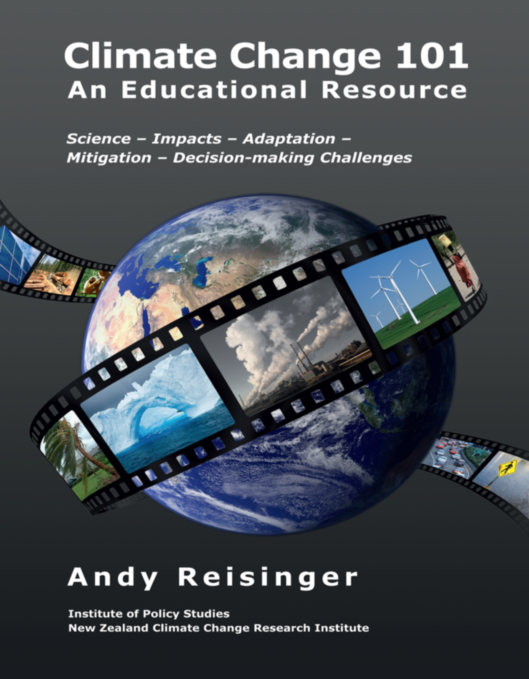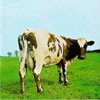
Resolve falters before the intimidating size of the IPCC 2007 Fourth Assessment Report (AR4). There are, of course, summaries, but what Andy Reisinger of Victoria University has attempted in his new book Climate Change 101: An Educational Resource is more than a summary. It is better described as an accessible overview of the ground AR4 more extensively covers. He aims to provide for senior high school students, university undergraduates or interested lay persons a systematic account of the scientific knowledge relevant to climate change and the response we need to make to its impacts. He succeeds well. All the main elements of a complex field are included and the book is packed with information, but a clear line of exposition is maintained throughout which assists a patient reader to understand how all this material contributes to the full picture. Reisinger was no doubt well prepared for his task by working as an editor of the AR4 Synthesis Report.
An outline of what the book contains gives little idea of the complexities of the author’s presentation, but I’ll indicate its broad framework. The first half deals with the basic science and Reisinger builds his material in four steps which make the logic of the science very clear. The first step is to look at observable changes in climate and their effects, without any assumptions as to what might be causing them. The climate is warming, unequivocally. Observable impacts of the warming are apparent in changes in such areas as coral reefs, agriculture and forestry, physical systems like glacier lakes and river flows, and various ecosystems.
The second step is to enquire what is driving these observed climate changes. Increasing greenhouse gas concentrations are an obvious candidate, but Reisinger stresses the need to demonstrate that only the increased greenhouse gas concentrations can account for the warming. Models have been important here. No other cause has left its fingerprint.
Step three considers projections for future changes. They include continuing increases in temperature, continuing sea level rise with an uncertain upper level because of the poorly understood dynamics of ice sheet glacier flow, changes in ice melt and snow cover, changes in regional precipitation, non-linear changes in climatic extremes. The complications of feedbacks are explored in this section.
Step four traverses many of the likely impacts which will result from the changing climate, in a range including effects on water supply, eco-system consequences, food supply, coastal zone threats, health effects, and the frequency of extreme events. The impacts are likely to be very unevenly distributed across different regions.
It’s a natural progression to move to consider how we can deal with the projected impacts of climate change, and the second half of the book centres on the two complementary strategies of adaptation and mitigation. The first increases our resilience to cope with the expected impacts. The second limits the scale of future impacts by limiting and reducing further emissions of greenhouse gases. The surveys of the two approaches are detailed and comprehensive. The way the two are combined to minimise risks and damages is important. The questions he discusses at this point include: How do we best balance our global efforts between adaptation and mitigation? How much mitigation is necessary to keep global impacts and adaptation needs at a manageable level? At what level should we aim to stabilise greenhouse gas concentrations, and how quickly do we need to reduce emissions to get there? How do we know it’s worth the cost?
An important chapter explores the relationship between climate change and development, explaining how understanding the interactions between the two can help us address both challenges together rather than playing them off against each other.
Finally he considers how the global response to climate change has developed through the United Nations Framework Convention on Climate Change and the Kyoto Protocol, and other processes. Thorny questions beset the search for agreement on the path ahead, and he writes with full appreciation of the difficulties for the various interests involved. Finding a fair and equitable balance of efforts between different country groups is a major stumbling block, even when most agree that greenhouse gases should be stabilised at no more than 450 ppm CO2-eq. Reisinger’s concluding reflection acknowledges the complications and frustrations of the process but affirms our personal responsibility to remain engaged with an issue for which we will be accountable decades from now.
Those are the bare bones of the book, but its value lies in the thoroughness of its coverage and the patience of its explanations. It is a painstaking work. There are no hasty conclusions, few stones left unturned, no legitimate interests ignored. It should serve its declared educational purpose well.

 NZ’s farming leadership remains in denial about the need for action on climate change, as a remarkable speech [
NZ’s farming leadership remains in denial about the need for action on climate change, as a remarkable speech [ The New Zealand government announced this afternoon that NZ would table a conditional emissions target of between 10% and 20% cuts on 1990 levels by 2020 [
The New Zealand government announced this afternoon that NZ would table a conditional emissions target of between 10% and 20% cuts on 1990 levels by 2020 [